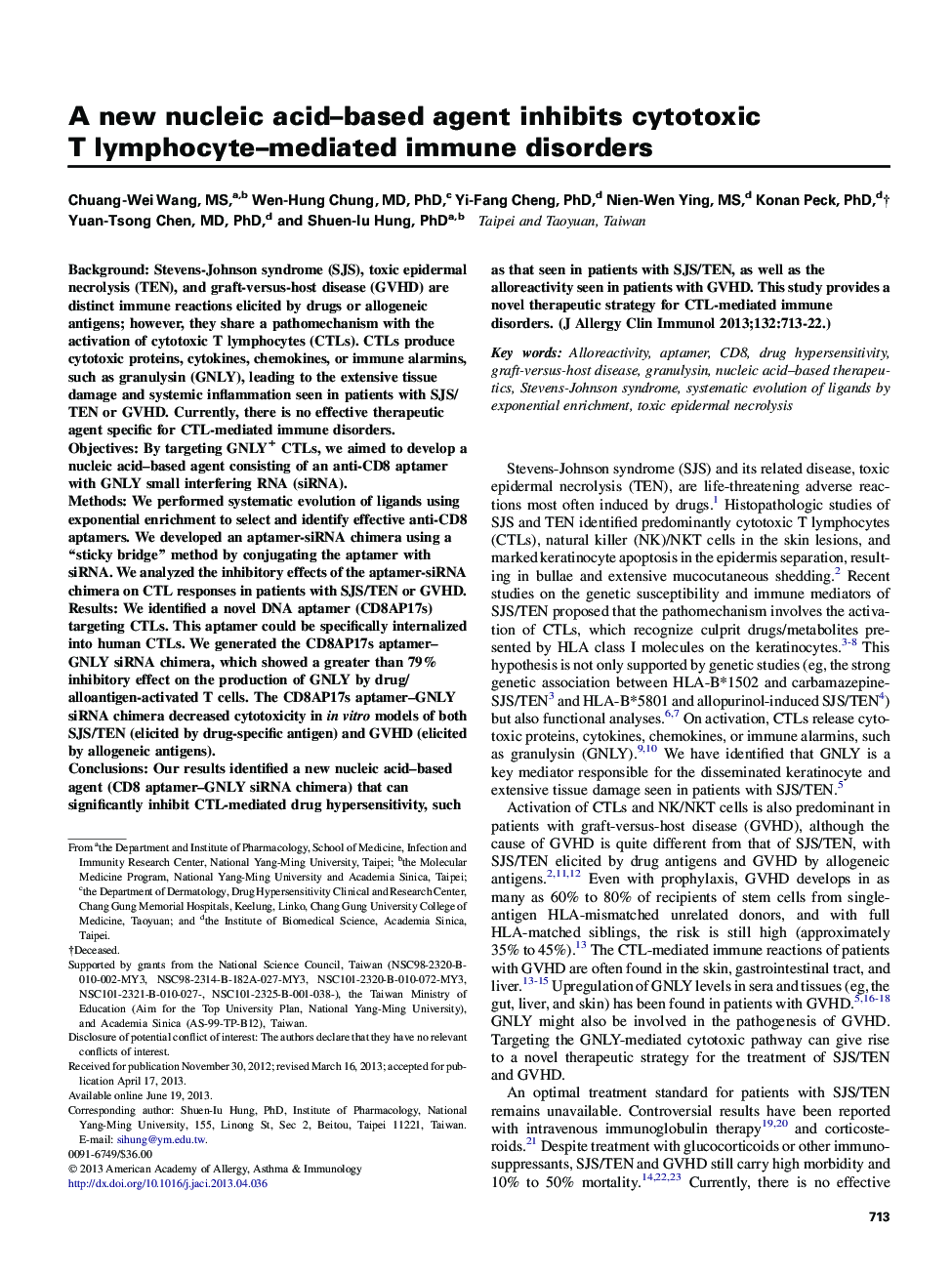| کد مقاله | کد نشریه | سال انتشار | مقاله انگلیسی | نسخه تمام متن |
|---|---|---|---|---|
| 6063872 | 1201855 | 2013 | 21 صفحه PDF | دانلود رایگان |

BackgroundStevens-Johnson syndrome (SJS), toxic epidermal necrolysis (TEN), and graft-versus-host disease (GVHD) are distinct immune reactions elicited by drugs or allogeneic antigens; however, they share a pathomechanism with the activation of cytotoxic T lymphocytes (CTLs). CTLs produce cytotoxic proteins, cytokines, chemokines, or immune alarmins, such as granulysin (GNLY), leading to the extensive tissue damage and systemic inflammation seen in patients with SJS/TEN or GVHD. Currently, there is no effective therapeutic agent specific for CTL-mediated immune disorders.ObjectivesBy targeting GNLY+ CTLs, we aimed to develop a nucleic acid-based agent consisting of an anti-CD8 aptamer with GNLY small interfering RNA (siRNA).MethodsWe performed systematic evolution of ligands using exponential enrichment to select and identify effective anti-CD8 aptamers. We developed an aptamer-siRNA chimera using a “sticky bridge” method by conjugating the aptamer with siRNA. We analyzed the inhibitory effects of the aptamer-siRNA chimera on CTL responses in patients with SJS/TEN or GVHD.ResultsWe identified a novel DNA aptamer (CD8AP17s) targeting CTLs. This aptamer could be specifically internalized into human CTLs. We generated the CD8AP17s aptamer-GNLY siRNA chimera, which showed a greater than 79% inhibitory effect on the production of GNLY by drug/alloantigen-activated T cells. The CD8AP17s aptamer-GNLY siRNA chimera decreased cytotoxicity in in vitro models of both SJS/TEN (elicited by drug-specific antigen) and GVHD (elicited by allogeneic antigens).ConclusionsOur results identified a new nucleic acid-based agent (CD8 aptamer-GNLY siRNA chimera) that can significantly inhibit CTL-mediated drug hypersensitivity, such as that seen in patients with SJS/TEN, as well as the alloreactivity seen in patients with GVHD. This study provides a novel therapeutic strategy for CTL-mediated immune disorders.
Journal: Journal of Allergy and Clinical Immunology - Volume 132, Issue 3, September 2013, Pages 713-722.e11